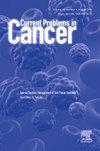Acute lymphoblastic leukemia following lenalidomide therapy in multiple myeloma patients: Two case reports and review of the literature
IF 2.3
4区 医学
Q3 ONCOLOGY
引用次数: 0
Abstract
Background
Lenalidomide, as an immunomodulatory drug, has significantly contributed to advancements in hematologic malignancies. However, lenalidomide therapy has been associated with rare but severe complications, particularly therapy-related acute lymphoblastic leukemia (t-ALL). This study aims to contribute to understanding the clinical, genetic, and therapeutic characteristics of t-ALL following lenalidomide therapy. To achieve this, cases reported in the literature were reviewed, and a comprehensive evaluation was conducted with the addition of two new case reports.
Methods
A comprehensive review of published cases was conducted using databases such as PubMed and Scopus. Inclusion criteria focused on patients who developed ALL following lenalidomide therapy. Clinical findings, cytogenetic data, treatment protocols, and outcomes were analyzed alongside two new cases from our institution.
Results
The findings revealed a diverse genetic landscape among patients with lenalidomide-associated t-ALL, with common abnormalities including TP53 mutations and hypodiploidy. The latency period for developing t-ALL after lenalidomide therapy varied widely, with a median duration of approximately 50 months (range: 6-126). Treatment strategies, such as intensive chemotherapy and allogeneic hematopoietic stem cell transplantation, showed variable efficacy, heavily influenced by cytogenetic risk factors and the presence of infections.
Conclusion
Lenalidomide-associated t-ALL represents a rare but clinically significant complication. Vigilant monitoring, early detection, and personalized therapeutic strategies are crucial for improving outcomes. This study emphasizes the importance of balancing the therapeutic benefits of lenalidomide against its potential risks and advocates for further multicenter studies to refine management protocols and discover predictive biomarkers.
多发性骨髓瘤患者来那度胺治疗后急性淋巴细胞白血病:两例报告和文献回顾
来那度胺作为一种免疫调节药物,在血液恶性肿瘤的治疗中发挥了重要作用。然而,来那度胺治疗与罕见但严重的并发症有关,特别是治疗相关性急性淋巴细胞白血病(t-ALL)。本研究旨在了解来那度胺治疗后t-ALL的临床、遗传和治疗特点。为了实现这一目标,我们回顾了文献中报道的病例,并进行了全面的评估,并增加了两个新的病例报告。方法利用PubMed、Scopus等数据库对已发表病例进行综合分析。纳入标准集中在来那度胺治疗后发生ALL的患者。临床表现、细胞遗传学数据、治疗方案和结果与我们机构的两个新病例一起分析。研究结果揭示了来那度胺相关t-ALL患者的不同遗传格局,常见的异常包括TP53突变和次二倍体。来那度胺治疗后发生t-ALL的潜伏期变化很大,中位持续时间约为50个月(范围:6-126)。治疗策略,如强化化疗和同种异体造血干细胞移植,显示出不同的疗效,严重受细胞遗传学危险因素和感染的影响。结论来那度胺相关t-ALL是一种罕见但具有临床意义的并发症。警惕监测、早期发现和个性化治疗策略对改善预后至关重要。本研究强调了平衡来那度胺的治疗益处及其潜在风险的重要性,并倡导进一步的多中心研究,以完善管理方案和发现预测性生物标志物。
本文章由计算机程序翻译,如有差异,请以英文原文为准。
求助全文
约1分钟内获得全文
求助全文
来源期刊

Current Problems in Cancer
医学-肿瘤学
CiteScore
5.10
自引率
0.00%
发文量
71
审稿时长
15 days
期刊介绍:
Current Problems in Cancer seeks to promote and disseminate innovative, transformative, and impactful data on patient-oriented cancer research and clinical care. Specifically, the journal''s scope is focused on reporting the results of well-designed cancer studies that influence/alter practice or identify new directions in clinical cancer research. These studies can include novel therapeutic approaches, new strategies for early diagnosis, cancer clinical trials, and supportive care, among others. Papers that focus solely on laboratory-based or basic science research are discouraged. The journal''s format also allows, on occasion, for a multi-faceted overview of a single topic via a curated selection of review articles, while also offering articles that present dynamic material that influences the oncology field.
 求助内容:
求助内容: 应助结果提醒方式:
应助结果提醒方式:


